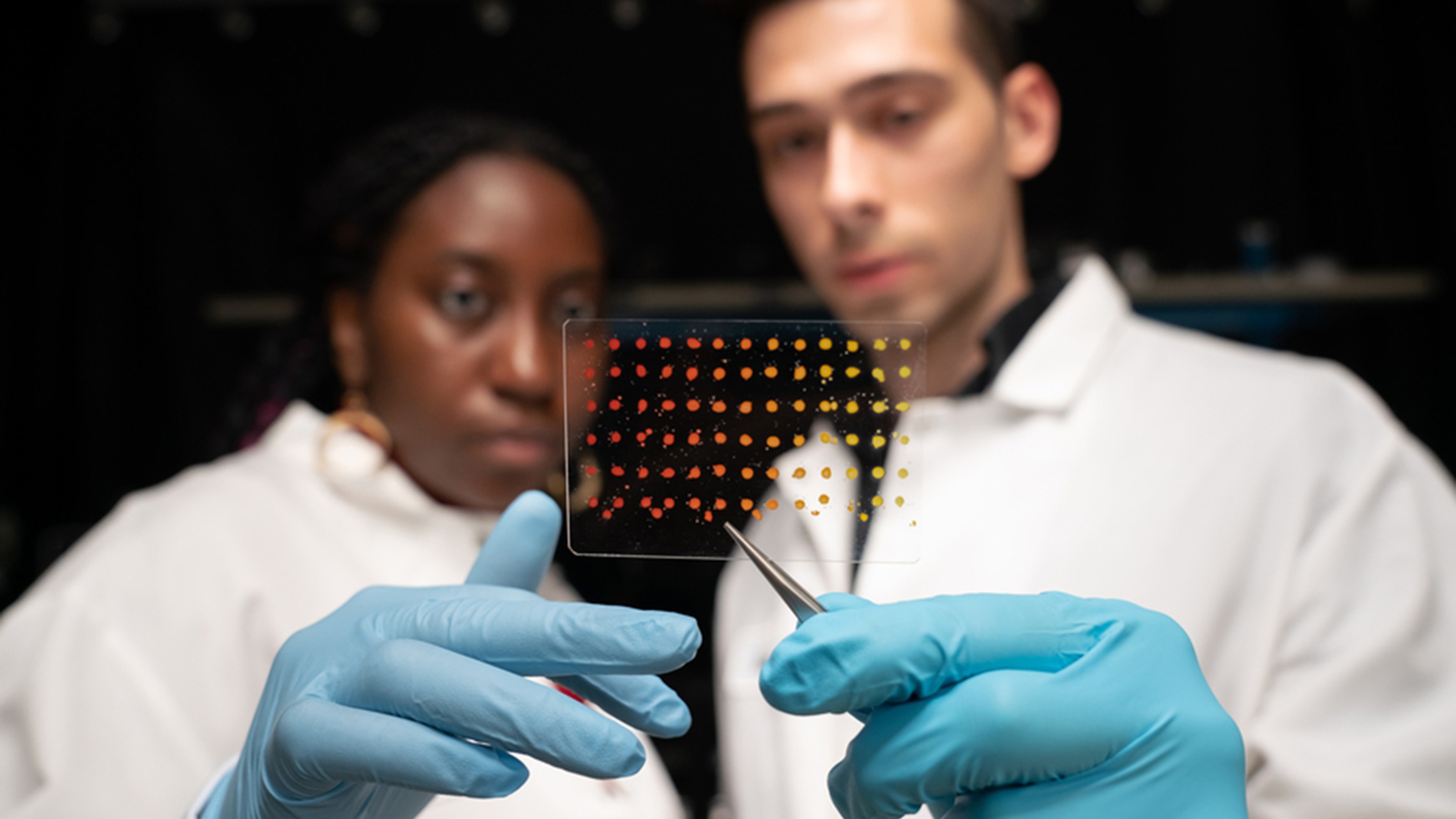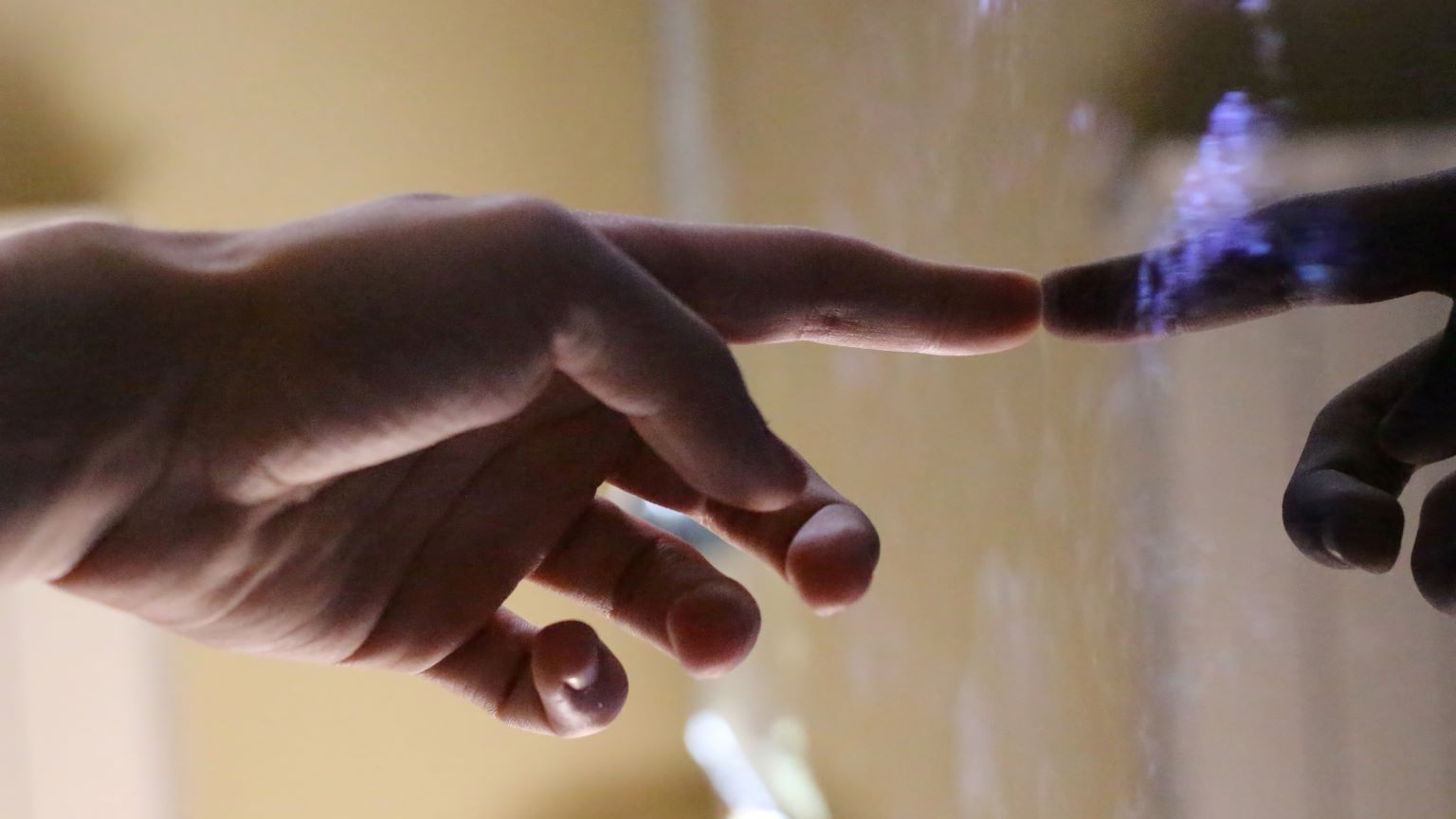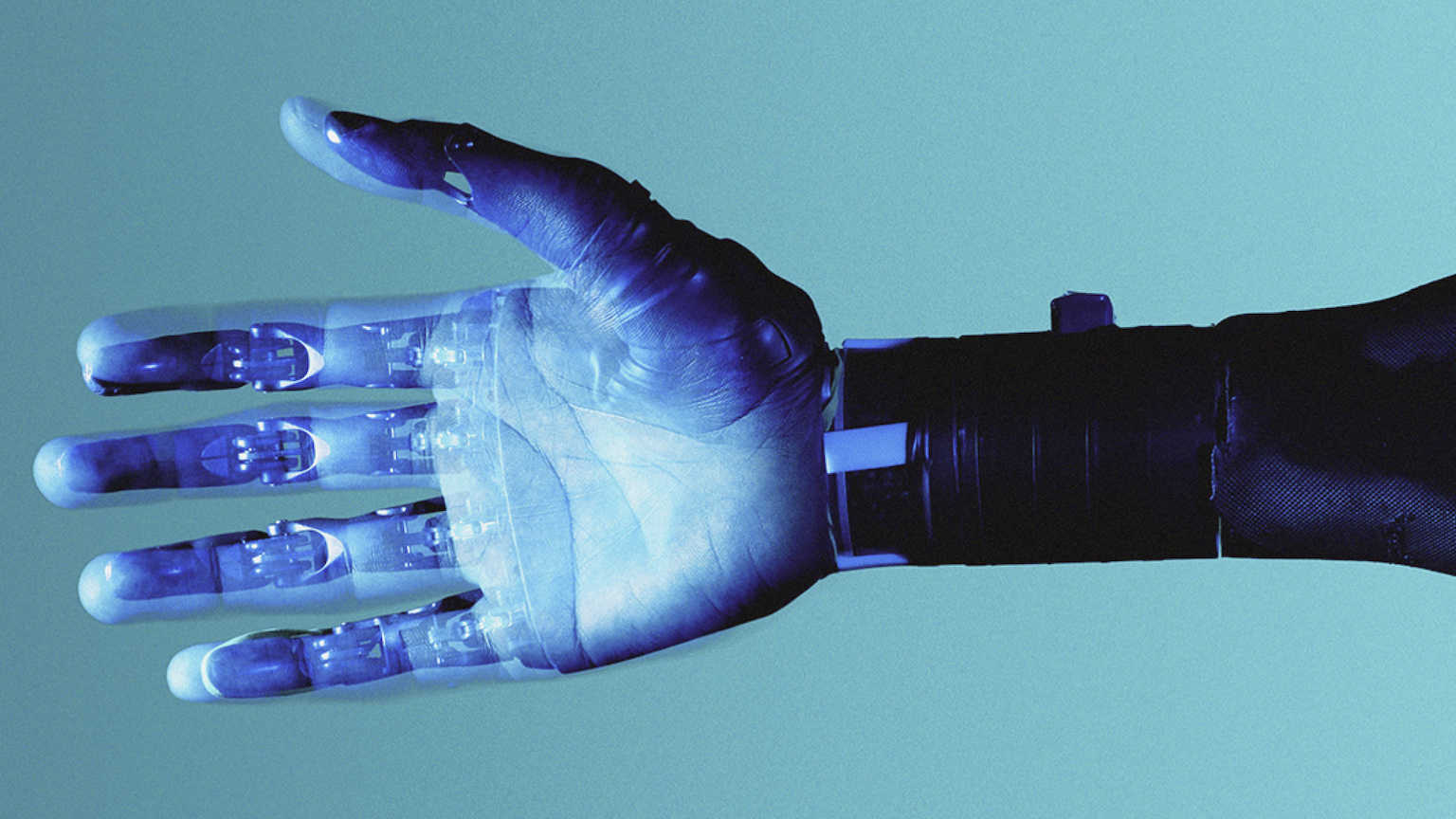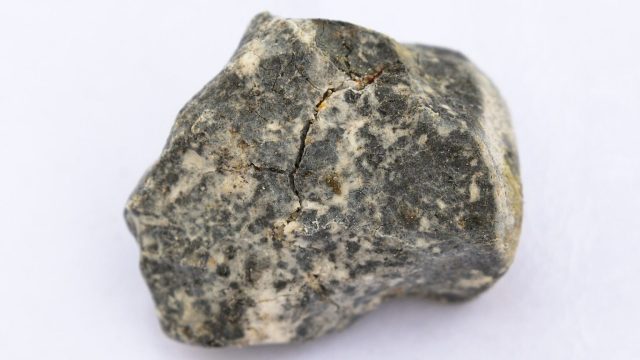Man feels hot and cold again with prosthetic hand breakthrough
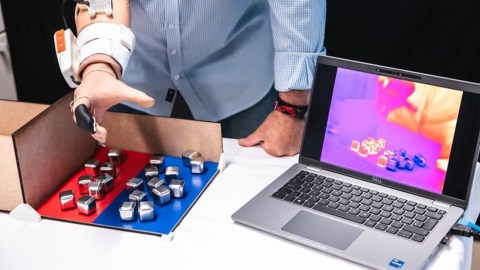
- For centuries, prosthetics have improved to enhance the lives of people with amputations.
- A new device, called MindTouch, allows people to sense temperature through prosthetics.
- In a recent study, researchers found that a user could sense hot and cold with his prosthetic hand at a level on par with his intact hand.
The earliest known prosthetics date back to ancient Egypt. One, called the “Cairo toe,” shows signs that it wasn’t simply cosmetic. Even 3,000 years ago, the wood-and-leather digit was designed for flexibility, suggesting it provided function alongside form.
Since then, people have worked hard to find ingenious means of improving the lives of people with amputations. Starting as early as the 15th century, engineers began incorporating cables, gears, and springs into prosthetics to give people the — albeit limited — ability to grasp objects and bend joints. Prosthetics were built to perform specific tasks, such as holding shields or playing the piano. And they became more comfortable with the discovery materials like rubber, plastics, and lightweight metals.
In the modern era, prosthetics exist that can be controlled with a user’s mind, use AI assistance, and reduce phantom pains.
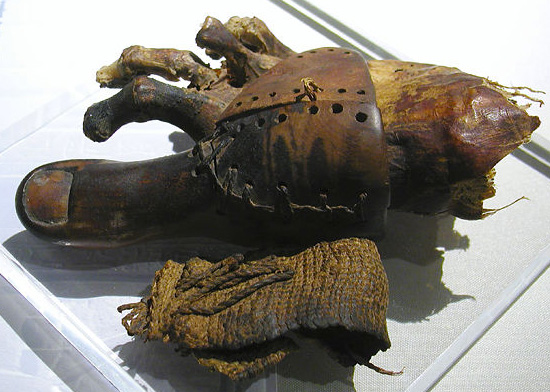
However, until recently, one advance has been missing from this history: touch. Figuring out how to elicit feeling through a prosthetic is important because limbs and appendages aren’t simply mechanical tools. A person’s sense of touch allows them to embody experiences, and absent that, there remains a meaningful disconnect from the external world.
While engineers have made impressive strides in helping some people experience tactile feedback through prosthetics, other sensations have been less researched.
“Temperature is one of the last frontiers to restoring sensation to robotic hands. For the first time, we’re really close to restoring the full palette of sensations to amputees,” Silvestro Micera, the Bertarelli Foundation chair in translational neuroengineering at the Swiss Federal Institute of Technology Lausanne (EPFL), says.
Micera is part of a research team developing a device capable of doing just that. Their latest study, published last month in the journal Med, shows that the device can not only help a person distinguish between temperatures but that it can be paired with already existing prosthetics.
Feeling phantom heat
They call their tech “MindTouch,” and a previous study explains how it taps into “phantom thermal sensations.”
Phantom sensations (aka phantom limb syndrome) are the feeling that a missing limb is still there. For instance, if a person has had a hand amputated, they may sometimes feel the absent appendage moving or even being touched. Around 60-80% of amputees report phantom sensations, and for some, they can even be painful.
But MindTouch uses phantom sensations to its advantage.
The procedure starts with the researchers mapping a person’s residual limb to discover areas that reliably elicit phantom sensations when experiencing hot or cold. Over several mapping sessions, they identify the place that most consistently elicits phantom sensations.
They then retrofit a user’s prosthetic with a device called a “thermode.” The thermode rests against the user’s skin at that consistent point, sending temperature signals to the nerves of the residual limb. The temperature signals are retrieved by sensors placed on the fingertips of the prosthetic.
As one participant in the study explained, “The most impressive for me was when the experimenter placed the sensor on his own body. […] I could feel the warmth of another person with my phantom hand. It [was] having a connection with someone.”
For the current study, the researchers enlisted the help of a 57-year-old man who had a transradial amputation. The participant reported having mild to no phantom limb pain. Over 130 days, the researchers performed the thermal mapping before augmenting the participant’s prosthetic arm with MindTouch. They then performed a series of tests to determine if he could pick up on temperature differences.
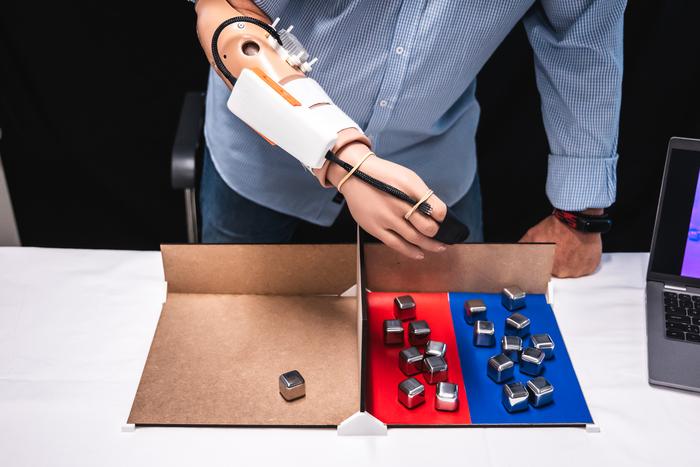
During the first test, the participant was asked to close his prosthetic hand around three indistinguishable brown bottles, filled with either hot, cold, or lukewarm water.
The second test asked the participant to identify copper, glass, or plastic slabs while blindfolded. Another blindfold test had him guessing whether he was touching a real human hand or an artificial silicone one. The fourth and final test had him sort identical stainless steel cubes that were either hot or cold.
“Our goal is to develop a multimodal system that integrates touch, proprioception, and temperature sensations,” Solaiman Shokur, study author and neuroengineer at EPFL, says. “With that type of system, people will be able to tell you ‘this is soft and hot,’ or ‘this is hard and cold.’”
Getting back in touch (with touch)
How did he do? In all of the tasks, the participant scored better than chance.
He aced the bottle test with MindTouch turned on, scoring 100% accuracy. In the blindfolded tests, which looked toward more subtle temperature differences, he correctly discerned between the human and artificial hands 80% of the time and correctly differentiated between the various materials 67% of the time, and could easily distinguish between plastic and copper. Finally, over various sessions of block sorting, he correctly placed 114 out of 153 blocks for an accuracy of 64%.
In all of these tests, when MindTouch was turned off, his accuracy dropped to chance level. In the case of the bottle sorting test, it was only 33%.
We think having the ability to sense temperature will improve amputees’ embodiment — the feeling that “this hand is mine.”
Solaiman Shokur
Interestingly, for two of the tests, bottle and materia sorting, he performed just as well with MindTouch as with his intact hand. The test where the prosthetic fell short by comparison was the handshake test; the researchers believe that other tactile sensations, such as skin texture, may have made the difference.
All told, the thermal sensations remained stable over 400 days, and because the device is noninvasive, no adverse effects were recorded.
“Adding temperature information makes the touch more human-like,” says senior author Shokur added. “We think having the ability to sense temperature will improve amputees’ embodiment — the feeling that ‘this hand is mine.’”
Moving forward, the team hopes to expand their studies to a larger cohort and determine how out-of-the-lab factors like air temperature and humidity affect MindTouch. They also note several challenges that will need to be overcome. Chief among these is devising a way to integrate multiple thermodes to evoke larger portions of someone’s phantom hand. They will also need to find a way to miniaturize the battery and controller unit to be more user-friendly.
“But these challenges are worth the effort,” the authors write, “as the long-term use of the thermal prosthetic hand could open completely new perspectives for prosthetic users. […] For the first time, we can envision the possibility of restoring a multimodal palette of natural sensations.”
This article was originally published by our sister site, Freethink.
